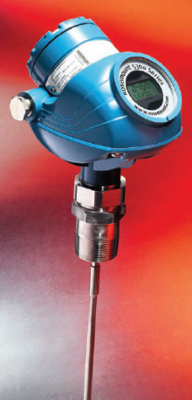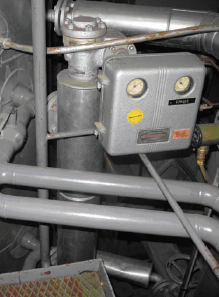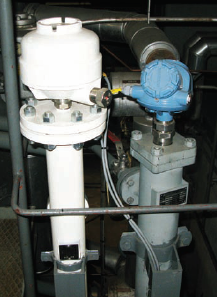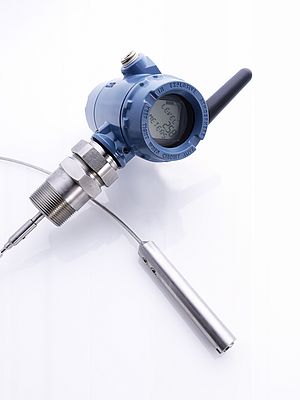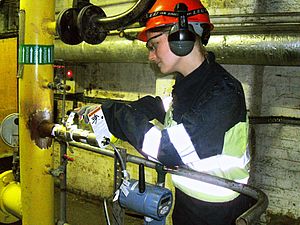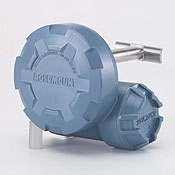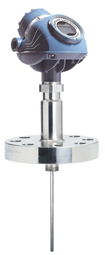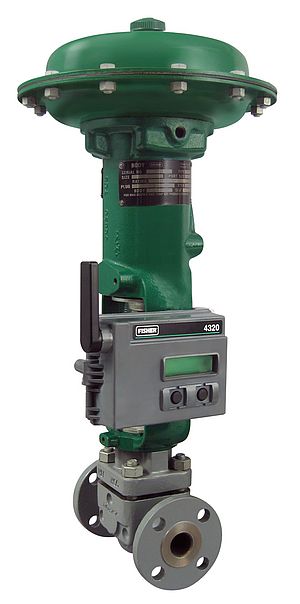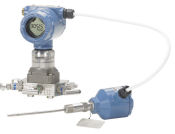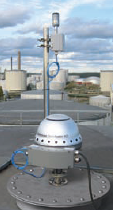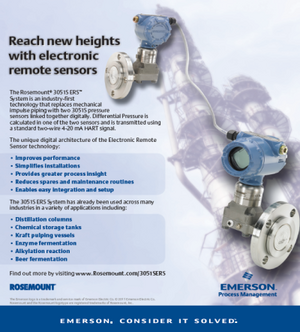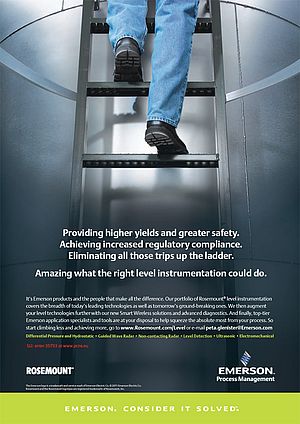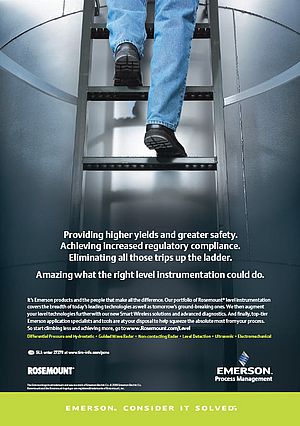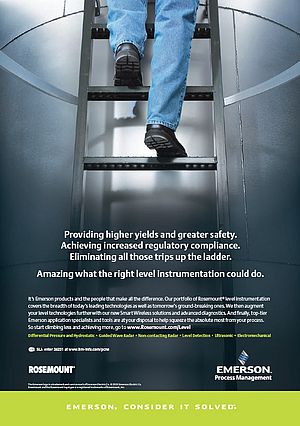E.ON is one of the world’s largest investor owned power and gas companies. E.ON Sverige supplies energy and energy-related services to approximately one million customers across Sweden. The company’s power plant in Örebro, Sweden, was built in the early 1960s and produces electricity and hot water for district heating. It uses two large condensers in which approximately 100-400 t/h steam, at a pressure of about 0.4 bar, heats the water which is then used to provide heating in the Örebro district. Upstream from the turbines, the pressure is 135 bar.
As the Örebro condensers were installed in 1974, E.ON decided to replace some of the plant’s old pneumatic instruments and valves. Pneumatic instruments are rarely used today following the introduction of electronic automation and hence, although the instruments are still functioning accurately, it is becoming increasingly difficult to find suppliers of spare parts or new instruments of this type.
Testing in parallel
E.ON was planning to install an electronic displacer for level control of the condensers to replace the existing pneumatic displacer, but became interested in the possibility of using Guided Wave Radar (GWR) following a discussion with Emerson Process Management. However, no power plant in Sweden had previously used GWR for condenser installations. The company also doubted that the response time of GWR was fast enough.
E.ON prefers to use well proven techniques for critical installations such as this, and so the company needed to test the use of an electronic displacer in the application before making any changes. When setting up the test, E.ON’s Instrument Manager, Per Lundmark, decided to additionally test a GWR instrument in parallel with the existing pneumatic displacer.
Reliability and accuracy
In the Örebro system, the condensate is collected in a small hotwell below each condenser. This contains float level switches for control of two large pumps and the existing pneumatic displacer. The displacer controls the outlet valve for the condensate by sending a pneumatic signal to a control valve downstream from the pumps.
E.ON needed a level transmitter that was not affected by steam or turbulence and could follow very rapid changes in the water level. These typically occur at start-up, when a large and rapid change in load forces the level transmitter to open the control valve very quickly, and when the operation stops or the condenser is tripped.
If the level transmitter is not reliable, the float switches will be triggered. If water levels become too low, a float switch closes the pump. A high level is extremely critical – a float switch in the condenser would give an alarm, while another second float switch would stop the turbine and boiler immediately to prevent water from backing up into the turbine, halting the production of electricity and heating water. Reliability of measurement is therefore extremely important.
Per Lundmark installed an electronic displacer and a Rosemount 5301 GWR, both in parallel with the old pneumatic displacer. Both new devices were installed in chambers. The work was carried out while the plant was shut down during the summer for maintenance.
GWR provides accuracy
When Per Lundmark and his colleagues reviewed the measurement results after a few months of operation, they found that the electronic displacer and the Rosemount 5301 GWR followed the exact same variations in the level, but with a difference of 11 per cent.
On further investigation they discovered that the new displacer had an offset of 11 per cent, probably due to the fact that it had been calibrated at the factory for a higher temperature. In addition, the chambers are installed at a distance from the hotwell and the temperature in the chambers, while not known, is lower than that in the hotwell. This temperature difference did not affect the GWR, but, because the displacer was calibrated at a different temperature, its accuracy was significantly affected.
The Rosemount 5301 GWR measured correctly and with high accuracy throughout the entire test. One of the key features of GWR is that it is unaffected by the temperature at which it makes a measurement, which is particularly important in this application, as the comparison with the electronic displacer showed. Furthermore, the response time of the GWR was faster than the response time of the displacer, which is useful in an application such as this where there are very rapid level changes. The GWR also enables the use of a PID-regulator to improve the level control during disturbances.
Other advantages of the Rosemount 5301 include a stronger signal due to Rosemount’s patented signal technique, which provides a stronger echo and higher readability in difficult operating conditions, and compliance with the SIL 2 safety standard. The head to probe connection has no wires and so is easy to replace without removal of the probe.
Delivering requirements
In conclusion, E.ON was extremely satisfied with the performance of the Rosemount 5301 GWR for this application. The company will continue with the test in Örebro for a further 12 months or more before they have sufficient data to support the replacement of the existing pneumatic system, but the prospects of using GWR for this application are extremely encouraging.
“When we first heard about what GWR could offer, we thought that the technology sounded ideal for this application but were unsure how reliable it would be,” explained Per Lundmark. “However, it has surpassed our expectations and demonstrated that it is both reliable and accurate in this application. The response time was also very fast, so provided it continues to perform at this level for our extended test period we are likely to install GWR at Örebro when we replace the condenser level control.”
Power Plant Successfully Trials Guided Wave Radar
E.ON Sverige decided to replace some of the old pneumatic instruments and valves on the condensers in its Örebro plant. Guided Wave Radar was tested next to electronic displacers.
- by Emerson Process Management - Rosemount Division
- March 11, 2010
- 356 views


